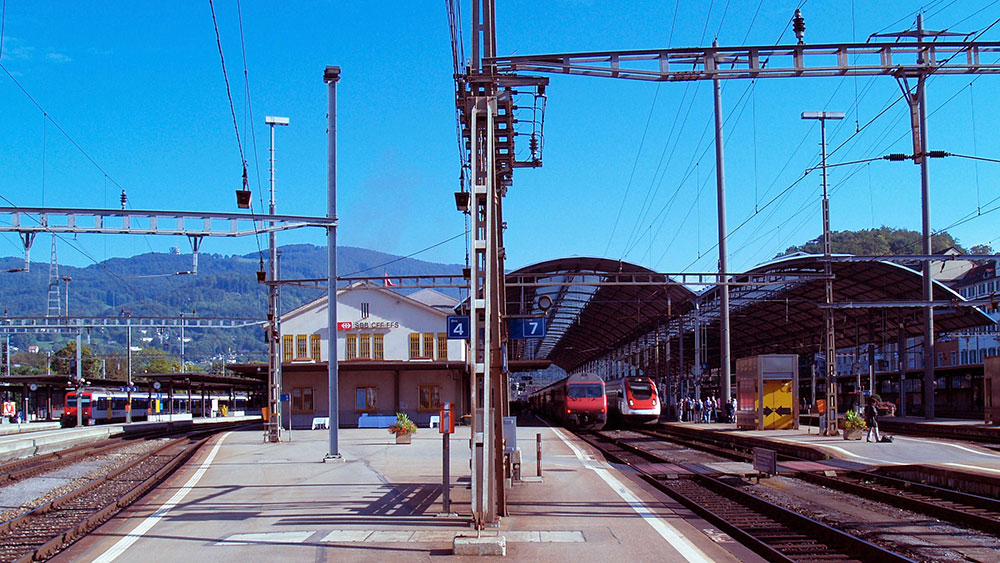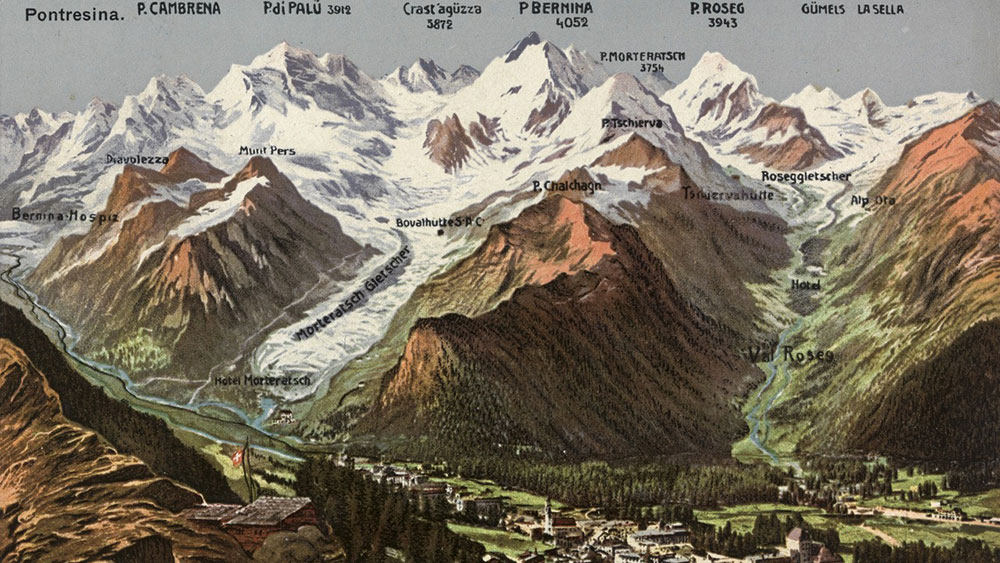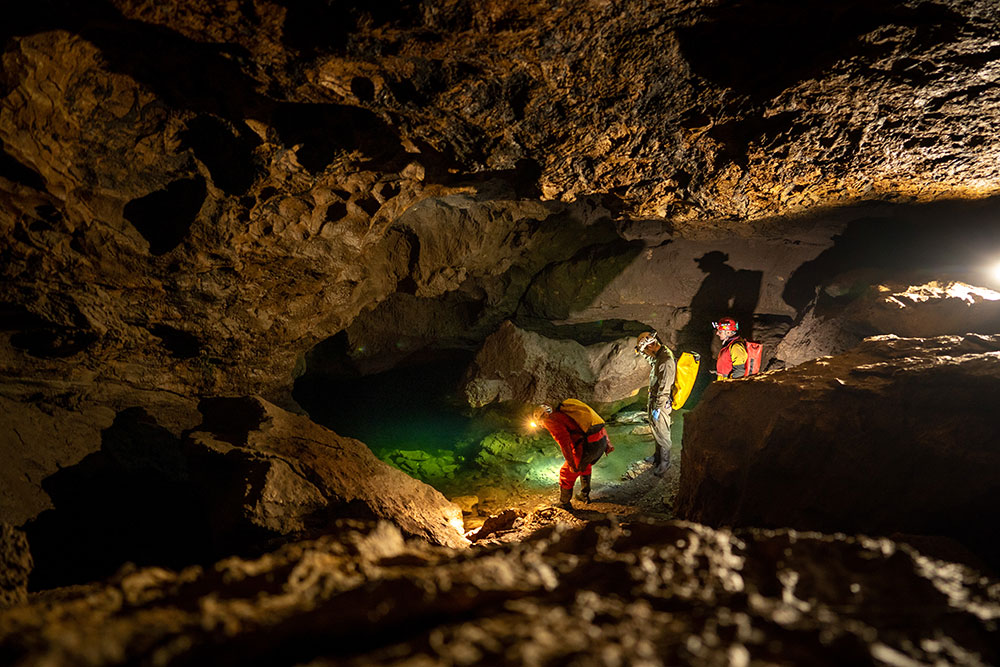Next Stop Olten

The “Rütli” of Swiss railway enthusiasts
“I often hear people say that the only reason to get off at Olten is to change trains. But there are many reasons why it’s worth paying the town a visit, not only as a cultural studies scholar. Since the mid-19th century, Olten has grown into a center of a new and modern Switzerland shaped by the railways and industry, small-town structures and liberal ideas. Olten could be described as the “Rütli” of Swiss railway enthusiasts. Even its train station has memorable places, such as the zero-kilometer stone on platform 12, or the legendary “Bahnhofsbuffet” restaurant. Don’t forget to stroll across the Aare river into the pretty old town, and in summer, no visit would be complete without a swim at the public river bath, with its classical modernist-style structures. After a dip in the Aare, you can unwind with a sundowner – and daydream about staying in Olten for good.”
Mischa Gallati, academic associate at the Department of Social Anthropology and Cultural Studies
Cooling waterways of Valais
“For an exciting water-themed trip in Switzerland, grab your wallet – and take a closer look at the Swiss 100-franc note, which features the famous historic waterways, or ‘suonen’. These irrigation channels, often also referred to as ‘bisses’, transport water down from mountain streams to the drier regions along the Rhone valley, where it is used in agriculture. The suonen perfectly illustrate the different hydroclimatic conditions in Valais – with areas of annual precipitation of less than 750mm to well over 1,500mm only a few kilometers apart. The waterways also demonstrate the great lengths to which people have gone to for centuries to secure access to water. For the young (or young at heart), the magnificent hiking trails along the suonen also provide ample opportunity to race boats made from twigs and blades of grass. And you can read up on the history and significance of these historic waterways in the suonen museum in Botyre.”
Jan Seibert, professor of physical geography

Anthropocene sediments
“The hike from Morteratsch station to Boval cabin is lined with pictures of postcards. The path was carefully laid out along the edges of the moraines in the middle of the 19th century – a period when glaciologists, photographers and tourists started flocking to the glacial valley near Pontresina. The quaint trail leads hikers to a cabin, built in 1877 and run by the Swiss Alpine Club, in about two hours, all the while offering views of a landscape that has turned into an eye-opening warning against climate change and melting glaciers. The glacier, whose ice used to fill the entire valley some 150 years ago, has retreated all the way to the very back of the valley. The Boval cabin overlooks what remains of the Pers and Morteratsch glaciers, which since 2015 have no longer converged. Numerous old photos and colored postcards from the online archives of ETH Zurich remind hikers of the massive ice masses that used to run the length of the valley down to Morteratsch station. They have since turned into documents that tell a part of the history of the Anthropocene.”
Monika Dommann, professor of modern history
Looking to the past
“If you want to switch off, this year you could do so by visiting the Landesmuseum in Zurich, which is currently running an exhibition on nuns and is the perfect opportunity to think about the relationship between the medieval times and present day, history and imagination. It’s just a shame that the exhibition only covers the period up to the Reformation, which could give you the idea that nuns no longer exist – which is of course nonsense, as a walk along the Limmat river to the Fahr convent will demonstrate.
Did you know that the first German-language Bible from Zurich wasn’t translated in Zwingli College, but by a medieval Dominican monk, roughly where the Zentralbibliothek today stands? And that the Reformation in Zurich featured (amongst other things) a book burning? There are many reasons why it is worth critically examining the past – even during the summer break.”
Christoph Uehlinger, professor of history of religions and religious studies

Treasure troves (of biodiversity)
“Discovering new and previously unknown species in Switzerland isn’t as absurd as it may sound. Over the past few years, the research project Amphipod.CH, which has brought together aquatic ecologists and cave enthusiasts, has revealed half a dozen previously unknown species of amphipods of the genus Niphargus in Switzerland, most of which live underground. Three of these amphipod species were discovered in the Hölloch cave system in the Muotathal valley, the second longest cave in Europe. The amphipods measure about two to three centimeters and are exclusive to the area, where they might also have survived the ice ages. This means that they’re among the oldest species found in Switzerland. The cave itself is mainly accessible in winter, as in summer it can be flooded with water from thunderstorms in a matter of minutes. I thus recommend hiking from Muotathal to the Silberen mountain and back again, knowing that a treasure trove of biodiversity lies just beneath your feet.”
Florian Altermatt, professor of aquatic ecology